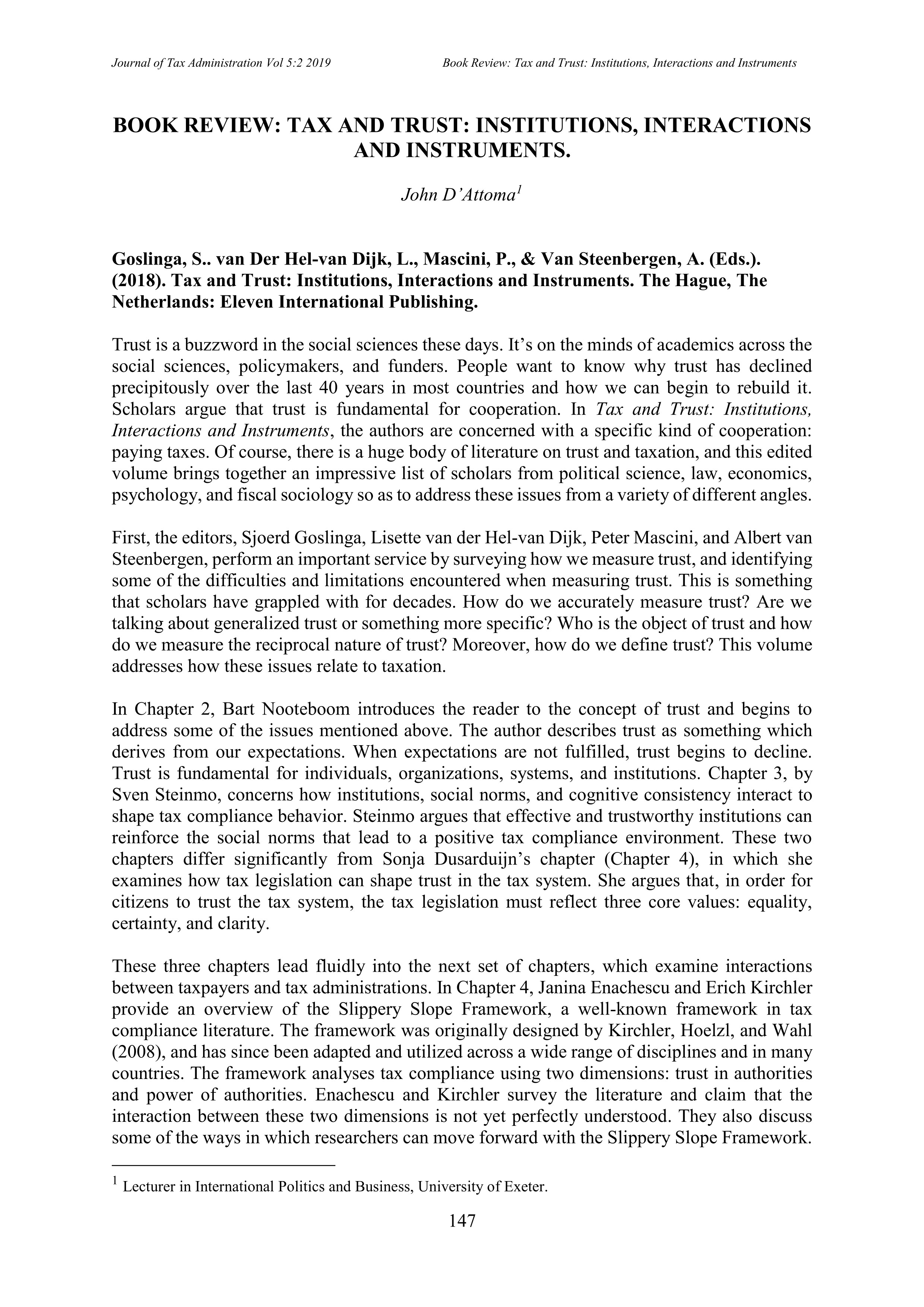Book Review: Tax and Trust: Institutions, Interactions and Instruments
References
Goslinga, S.. van Der Hel-van Dijk, L., Mascini, P., & Van Steenbergen, A. (Eds.). (2018). Tax and Trust: Institutions, Interactions and Instruments. The Hague, The Netherlands: Eleven International Publishing.

Downloads
Published
How to Cite
Issue
Section
License
Copyright (c) 2019 John D'Attoma

This work is licensed under a Creative Commons Attribution 4.0 International License.
Our open access status means that authors retain the copyright of their work. However, all papers published in JOTA are done so under a Creative Commons Attribution 4.0 International license (CC BY). This means that others can share and/or adapt your work without your permission as long as they follow certain rules, including attributing your work correctly.
You can learn more about this on our Open Access, Licensing, and Copyright Policies page.



